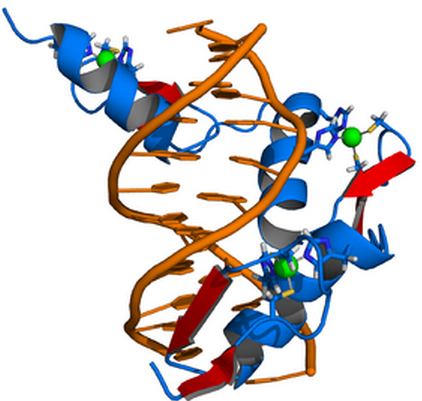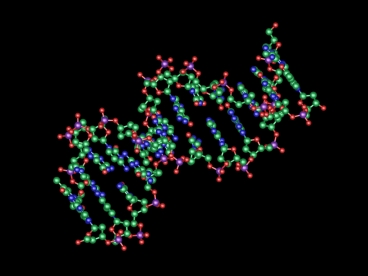Expanding synthetic biology’s toolkit for creating genetic circuits
August 3, 2012
Background
By assembling genetic components into “circuits” that perform logical operations in living cells, synthetic biologists aim to artificially empower cells to solve critical problems in medicine, energy and the environment.
Achieving these complex functions requires controlling many genetic and cellular components, including not only genes but also the regulatory proteins that turn them on and off. In a living cell, proteins called transcription factors often regulate that process.
Achieving these complex functions requires controlling many genetic and cellular components, including not only genes but also the regulatory proteins that turn them on and off. In a living cell, proteins called transcription factors often regulate that process.
So far, most researchers have designed their synthetic circuits using transcription factors found in bacteria. However, these don’t always translate well to nonbacterial cells and can be a challenge to scale, making it harder to create complex circuits, says Timothy Lu, assistant professor of electrical engineering and computer science and a member of MIT’s Research Laboratory of Electronics.
New method
Now a new method developed by Boston University biomedical engineers Ahmad S. Khalil and James J. Collins — and collaborators at Harvard Medical School, Massachusetts General Hospital and MIT — could significantly increase the number of genetic components in the synthetic biologists’ toolkit and, as a result, the size and complexity of the genetic circuits they can build.
The development could dramatically enhance their efforts to understand how biological organisms behave and develop and also to reprogram them for a variety of practical applications.
The method offers a new paradigm for constructing and analyzing genetic circuits in eukaryotes — or organisms whose cells contain nuclei, which include everything from yeasts to humans. Instead of constructing these circuits with off-the-shelf parts from bacteria and porting them into eukaryotes, as most synthetic biologists do, Khalil and his collaborators have engineered these circuits using modular, functional parts from the eukaryotes themselves.
Building synthetic genetic circuits

Constructing circuits using synthetic transcription factors (credit: Ahmad S. Khalil, Timothy K. Lu, Caleb J. Bashor, Cherie L. Ramirez, Nora C. Pyenson, J. Keith Joung, James J. Collins/Cell)
Recent advances in designing proteins that bind to DNA gave the researchers the boost they needed to start building a new library of transcription factors. The research team built their synthetic genetic circuit parts from “zinc fingers” — proteins that can be programmed to bind desired DNA sequences.

Cartoon representation of a protein (blue) containing three zinc fingers in complex with DNA (orange) (credit: Wikimedia Commons)
The modularity of the new parts enables a wide range of functions to be engineered. It also allows for constructing much larger and more complex genetic circuits than what’s now possible with bacteria-based parts, and ultimately, develop much more powerful applications.
Synthetic biology circuits can be analog or digital, just like electrical circuits. Digital circuits include logic functions such as AND and OR gates, which allow cells to make unequivocal decisions such as whether to undergo programmed cell suicide.
Analog functions are useful for sensors that take continuous measurements of a specific molecule in the cell or its environment. By combining those circuits, researchers can create more complex systems in which a digital decision is triggered once the sensor reaches a certain threshold.
Applications
“Our research may lead to therapeutic applications, such as the dynamic modification and control of genes and genetic networks that are important in human disease,” said Khalil. Potential medical applications include stem cell therapeutics for a wide variety of injuries and diseases and in-cell devices and circuits for diagnosing early stages of cancer and other diseases. The new method may also equip groups of cells to perform higher-order computational tasks for processing signals in the environment in sensing applications.
The research was funded by the Howard Hughes Medical Institute, National Institutes of Health, the Office of Naval Research, the Defense Advanced Research Projects Agency and the National Science Foundation.
